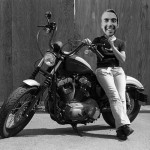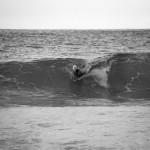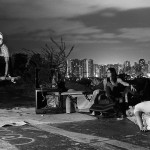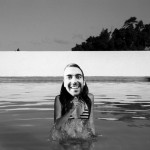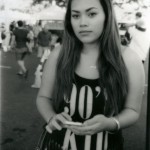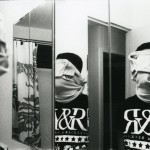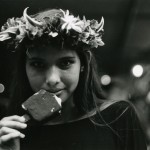Ka ʻike a ka makua he hei na ke keiki.
The knowledge of the parent is (unconsciously) absorbed by the child. Nurture and value my identity as a source of understanding, purpose, meaning, and connection to others.
“There is nothing worse than a sharp image of a fuzzy concept.” – Ansel Adams
PROJECT OVERVIEW: (Project2-PDF) (Project2-WordDoc)
This is your chance to tell people about yourself through your images! Utilize visual focus to communicate a conceptual focus! Think about how the viewer of your photographs would be able to learn about you. Photograph your favorite things, family members, BFFs, pets, your neighborhood/house/bedroom, hobbies, or what you did over the weekend. You can even do self-portraits!
Be creative! Try seeing how a lower or higher point of view can change your image – try kneeling down to take a picture, or standing up on a chair and looking down. See how close you can get to your subject while still keeping a good focus. Look for interesting lighting! The lighting outside between 10am to 2pm is very strong and can give you really blown out images; try shooting in the morning or later afternoon/evening hours for some real beautiful lighting and shadows. Play with the depth of field and trying selective focus by shooting with a small aperture. Stay away from taking pictures of pictures – make it your own!
Scroll down to the bottom of the page for examples and inspiration.
What’s Due:
- 1 – Roll of Film with a minimum of 24 images
- 1 – Contact Sheet
- 2 – 5″x7″ prints
AT THE END OF THIS PROJECT, STUDENTS WILL BE ABLE TO:
- utilize different camera settings to manipulate focus
- purposefully use/read visual and conceptual focus in our photographs
- Shape an artistic investigation of an aspect of present- day life using a contemporary practice of art or design.
EXAMPLES/INSPIRATION:
- Vivian Maier became a nanny in New York during the 1950s and photographed throughout her life.
- What do the objects we keep say about us?
- Try making a list of your favorite things and photographing them
– Local photographer Chris Rohrer has always thought he had the coolest friends and family, so much so that sometimes he wishes he were them. Channeling this desire, he made a larger-than-life mask of his face and photographed people wearing it, creating portraits in which he assumes the other person’s identity.
HAVING AN IDENTITY CRISIS? (STOP) HEREʻS A FEW SIMPLE IDEAS YOU CAN TRY OUT:
- OPTION 1: EVERYTHING IS LAVA
- Choose a spot and stay there. Everything around you is now lava and you have to somehow take 24 different-looking pictures from where you stand. You can spin, squat, jump, stand on one leg, move your camera, change your angle, take landscapes or close ups, wait as long as you want, leave and come back later, but all your pictures must be taken from that one spot. This is an exercise in observation and patience. What spot did you choose and what does that location say about you? Who or what passes you by? How does the world/light/weather change while youʻre in your spot?
- OPTION 2: X MARKS THE SPOT
- Choose your favorite number or roll a dice to find a number. This number will determine the number of steps youʻll take. Start out in a location you want to photograph and take a picture; then walk X number of steps and take another picture where ever you land. Keep walking X number of steps and taking pictures until you finish your roll of film. This option creates a random journey and forces you to compose shots with little control over where you are.
- OPTION 3: EYE-SPY
- Pay attention to the world around you and see where you can find yourself in your environment by photographing your reflection or your shadow in interesting locations. Mirrors are easy, but where else can you find reflections? What parts of you are being reflected? Where is this reflection/shadow found?
PREVIOUS STUDENT WORK:
- Alexyss Aki, gr 12
- Evansen Costanios, gr 12
- Kalawaia Fano, gr 12
- Kamalu Goo, gr 9
- Nanea Alden, gr 12
- Growth Mindset and Self Efficacy:
- Growth Mindset:Students learn to be goal oriented, resilient, and to view hard work, challenges, new experiences, learning, and perseverance as stepping-stones to growth.
- Self-efficacy: Students develop a strong, positive self-image and gain confidence in their ability to set and achieve goals.
- Problem Solving and Innovation and Creativity
- Problem Solving: Students develop skills in identifying, articulating, and solving problems.
- Innovation and Creativity: Students learn to innovate and generate new ideas, processes, activities, and solutions, and apply these to achieve productive outcomes.
National Core Arts Standards
CREATING – HS Proficient VA: Cr1.2.Ia – Anchor Standard 1: Generate and conceptualize artistic ideas and work.
Enduring Understanding: Artists and designers shape artistic investigations, following or breaking with traditions in pursuit of creative artmaking goals.
- How does knowing the contexts histories, and traditions of art forms help us create works of art and design?
- Why do artists follow or break from established traditions?
- How do artists determine what resources and criteria are needed to formulate artistic investigations?
RESPONDING – HS Proficient VA: RE.7.1.Ia – Anchor Standard 7: Perceive and analyze artistic work.
Enduring Understanding: Individual aesthetic and empathetic awareness developed through engagement with art can lead to understanding and appreciation of self, others, the natural world, and constructed environments.
- How do life experiences influence the way you relate to art?
- How does learning about art impact how we perceive the world?
- What can we learn from our responses to art?

